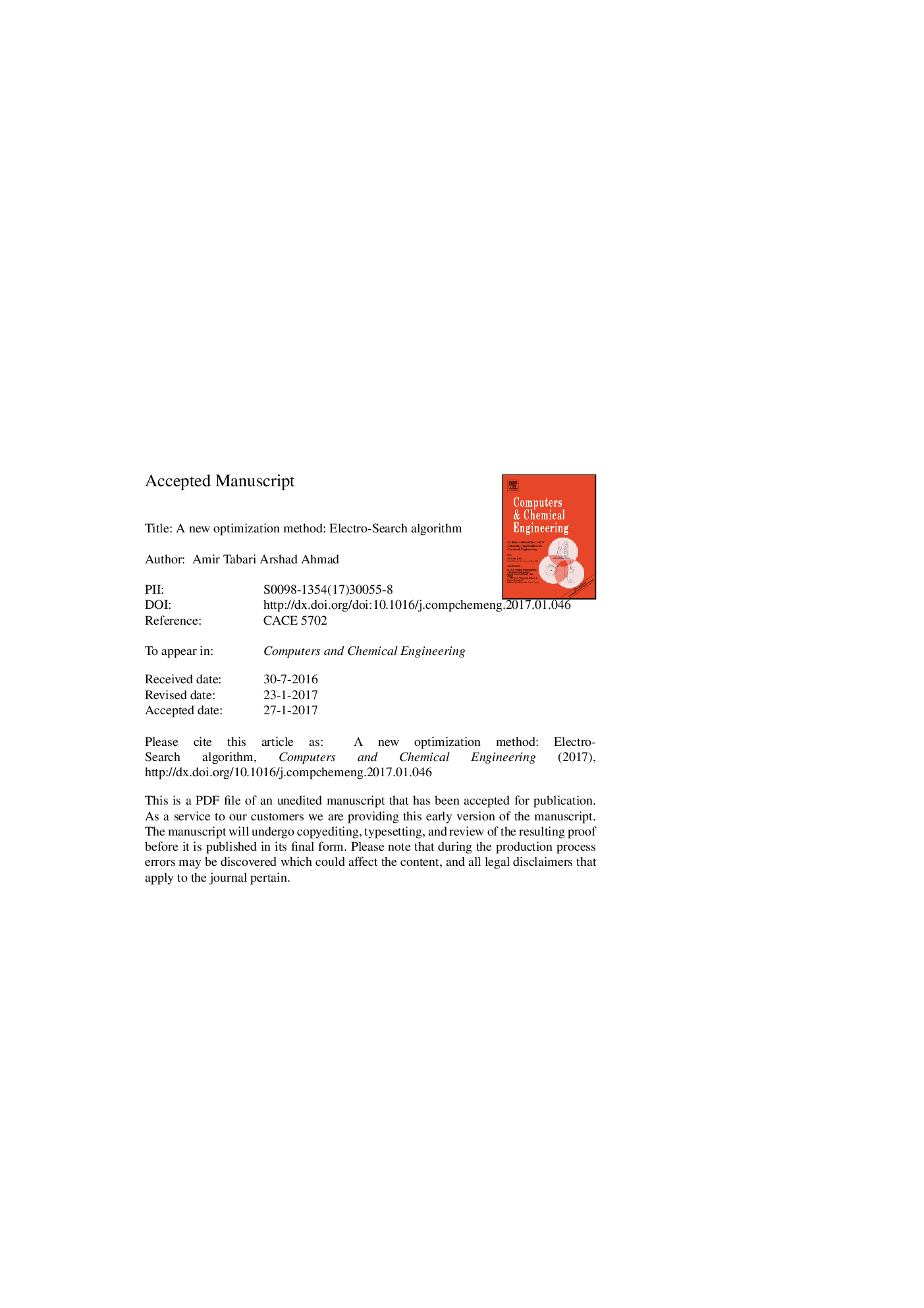| Article ID | Journal | Published Year | Pages | File Type |
|---|---|---|---|---|
| 4764586 | Computers & Chemical Engineering | 2017 | 38 Pages |
Abstract
Natural phenomena have been the inspiration for proposing various optimization algorithms such as genetic algorithms (GA), particle swarm optimization (PSO) and simulated annealing (SA) methods. The main contribution of this study is to propose a novel optimization method, Electro-Search algorithm, based on the movement of electrons through the orbits around the nucleus of an atom. Electro-Search (ES) algorithm incorporates some physical principals such as Bohr model and Rydberg formula, adopting a three-phase scheme. In the atom spreading phase, the atoms (i.e., candidate solutions) are randomly spread all over the molecular space (i.e., search space). In the orbital transition phase, the electrons jump to larger orbits, aiming for orbits with higher energy levels (i.e., better fitness value). The atoms are then relocated towards the global optimum point in the atom relocation phase, navigated by other atoms' trajectory. Besides, the ES tuning parameters are progressively updated through successive iterations via a self-tuning approach developed, namely Orbital-Tuner method (OTM). The efficiency of ES algorithm is examined in various optimization problems and compared with other well-known optimization methods. The effectiveness and robustness of ES algorithm is then tested in achieving the optimal design of an industrial problem. The results demonstrated the superiority of the new ES algorithm over other optimization algorithms tested, and outperforms current optimization algorithms in real-life industrial optimization problems.
Related Topics
Physical Sciences and Engineering
Chemical Engineering
Chemical Engineering (General)
Authors
Amir Tabari, Arshad Ahmad,
